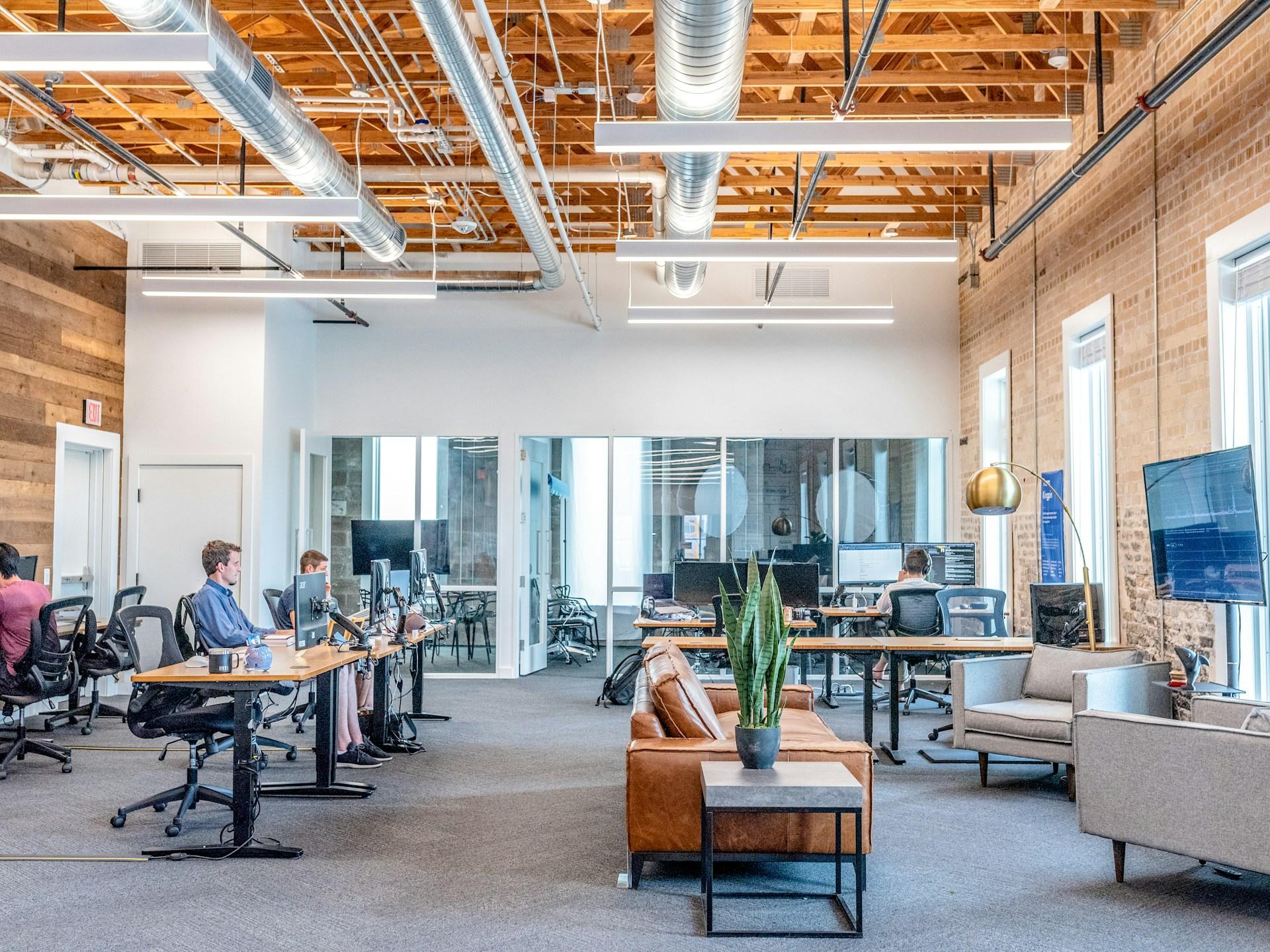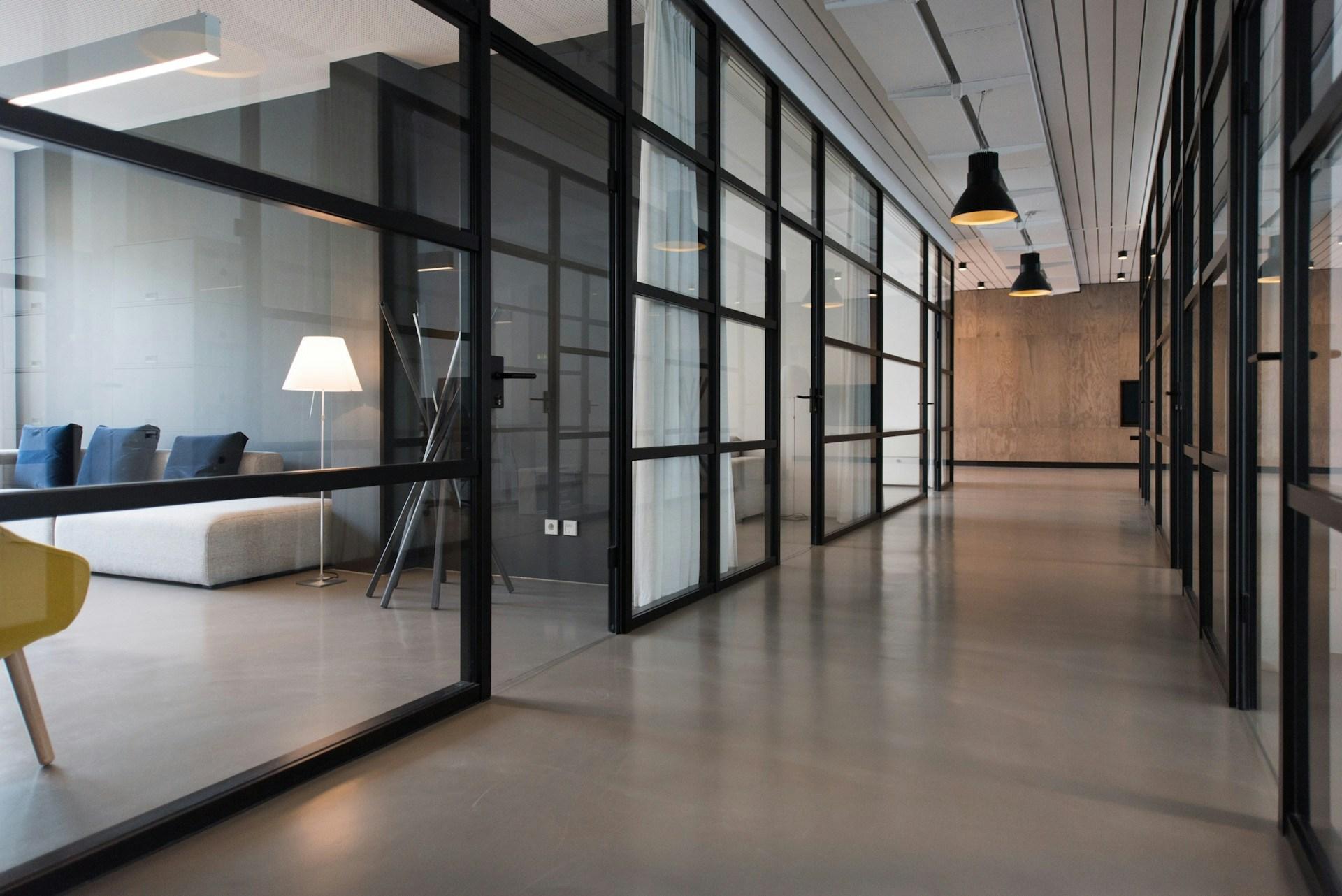Lighting in the workplace isn’t just about helping people see—it plays a fundamental role in how well employees perform and, ultimately, in a company’s overall success. These days, many offices are making the switch to energy-efficient technologies, and LED lighting has quickly become the top choice. But what makes it stand out? While it’s great for saving energy, that’s just the beginning.
LED lighting has a far-reaching impact, enhancing employee productivity, well-being, and the overall workplace environment. In this article, we’ll dive into how this lighting solution is shaping the modern office.
What is LED Lighting?
At its core, LED (Light Emitting Diode) technology is simple. These lights work by passing an electric current through a semiconductor, which produces light. Sounds straightforward, but the technology offers so much more. Over the past few years, LEDs have become a fixture in office spaces, and it’s easy to see why. They offer countless benefits when compared to traditional lighting methods.
Key Features of LED Technology
- Energy Efficiency: LEDs are incredibly efficient, using up to 75% less energy than their incandescent or fluorescent counterparts. That’s a major win for businesses looking to cut costs.
- Long Lifespan: Not only are LEDs energy-efficient, but they also last longer. With a lifespan of up to 25,000 hours, they require far fewer replacements, reducing maintenance and costs.
- Customisable Light Quality: Whether your office needs bright, cool light or a softer, warmer tone, LEDs can be tailored to suit a wide range of environments. This flexibility ensures that your workspace is always lit in the most optimal way.
LEDs vs. Traditional Lighting
When stacked up against more traditional options, LEDs consistently come out on top. Consider fluorescent lighting—many are familiar with its flickering, inconsistent brightness, and sometimes harsh glare. LEDs, by contrast, provide uniform, stable illumination and can be adjusted to suit various tasks. The ability to dim or brighten the light makes it easy to create the perfect atmosphere, whether employees need to focus or collaborate.
The Vital Role of Lighting in Workplace Productivity
The Necessity of Proper Lighting
You might not think about it much, but the right lighting in an office is absolutely essential for keeping people productive. It’s not just about making sure employees can see what they’re doing—good lighting helps reduce eye strain and fatigue, too. This, in turn, lets people work more efficiently without feeling worn out. When spaces are lit with steady, comfortable light—like that provided by modern LED systems—employees tend to stay focused longer. The distractions caused by flickering or harsh lighting just aren’t an issue any more. Studies have even found that natural-spectrum LED lighting can significantly ease eye fatigue, leading to improved concentration and, ultimately, better performance across the board.
How Lighting Types Affect Work Performance
The type of lighting in a workspace can make or break employee performance. Get it right, and the difference is obvious. Brightness is one factor—it’s crucial to have enough light for people to see clearly, particularly for detailed tasks. But there’s more to it than that. The colour temperature of the light also plays a key role. Cooler light, usually around 5000K, tends to boost alertness and concentration, making it perfect for tasks where precision is critical. Warmer light, around 3000K, on the other hand, helps create a calmer, more relaxed vibe, ideal for areas where people need to unwind or collaborate more casually. Striking the right balance between these two can help tailor the workspace to different tasks, and even support employees’ natural circadian rhythms, helping them feel more energised when it matters most.
The Many Benefits of LED Workplace Lighting
Energy Efficiency and Sustainability
One of the standout advantages of LED lighting in the workplace is how incredibly energy-efficient it is. Compared to older options like incandescent or fluorescent bulbs, LEDs use a fraction of the energy—sometimes up to 75% less. And that energy reduction shows up where it counts: on the electricity bill. For larger organisations, particularly those with extensive lighting needs, the savings can be substantial.
But it’s not just about saving money. By using less electricity, companies that switch to LED lighting are also contributing to a smaller carbon footprint. This aligns with global environmental targets and the increasing emphasis on corporate social responsibility. The fact that LEDs last so much longer—up to 25,000 hours or more—means fewer bulbs need to be replaced, which further reduces waste and the environmental impact of constant disposal.
Another big plus? LED lighting works seamlessly with smart technologies. These systems can adjust brightness based on whether a room is occupied or how much daylight is coming in, optimising energy use automatically. It’s this kind of smart energy management that’s becoming a priority in sustainable workplace design. For companies looking to balance cost savings with ecological responsibility, LED lighting is a forward-thinking choice that’s hard to ignore.
Enhancing employee well-being
LED lighting not only saves energy but also enhances the well-being of employees. Key benefits include:
- Mood enhancement and mental health: Adequate and well-designed lighting can improve moods, which is vital for maintaining a motivated workforce.
- Reduction of fatigue and irritability: LEDs’ consistent quality of light helps in reducing overall fatigue, minimizing irritability associated with poor lighting conditions.
Versatility and adaptability
LED workplace lighting systems can adapt to various environments, offering:
- Dimming capabilities: The ability to adjust brightness according to specific tasks throughout the day can enhance comfort and focus.
- Smart lighting systems: Integrating LED lights with smart technology allows for personalized settings, optimizing energy usage based on occupancy and daylight availability.
Although LED lighting technology brings long-term savings, it’s important to recognise that the initial installation costs can be quite high. For many businesses, this upfront expense may seem daunting, but it’s worth looking at it as an investment. Over time, the reduction in energy consumption and maintenance costs far outweighs the initial financial outlay.
That said, LEDs aren’t without their drawbacks. One potential issue is over-lighting. If the lighting is too intense, it can cause discomfort or even become a distraction, which is the opposite of what’s intended in a productive work environment. Another concern often raised is related to the blue light emitted by some LEDs. Prolonged exposure to this kind of light has been linked to potential health risks, particularly concerning eye strain and disruptions to sleep patterns. Fortunately, choosing the right colour temperatures and adjusting light levels can help mitigate these issues.
To get the most out of LED lighting, businesses should carefully plan their lighting setup. It’s crucial to strike a balance between natural and artificial light—incorporating natural daylight where possible can make the workplace feel more open and inviting. Additionally, tailoring the lighting to meet the specific needs of different areas in the office ensures that LEDs are used to their full potential. This kind of thoughtful implementation not only optimises productivity but also enhances the overall atmosphere of the workspace.
A bright future for workplace lighting
The compelling arguments for adopting LED workplace lighting are anchored in improved employee productivity, comfort, and satisfaction. As more businesses realize the long-term benefits of this technology, the shift towards LED lighting seems not only logical but essential. By prioritizing the needs of employees through quality lighting, companies can foster better work dynamics conducive to success.
Embracing LED workplace lighting is a proactive step that businesses should take to enhance productivity and overall employee well-being.




